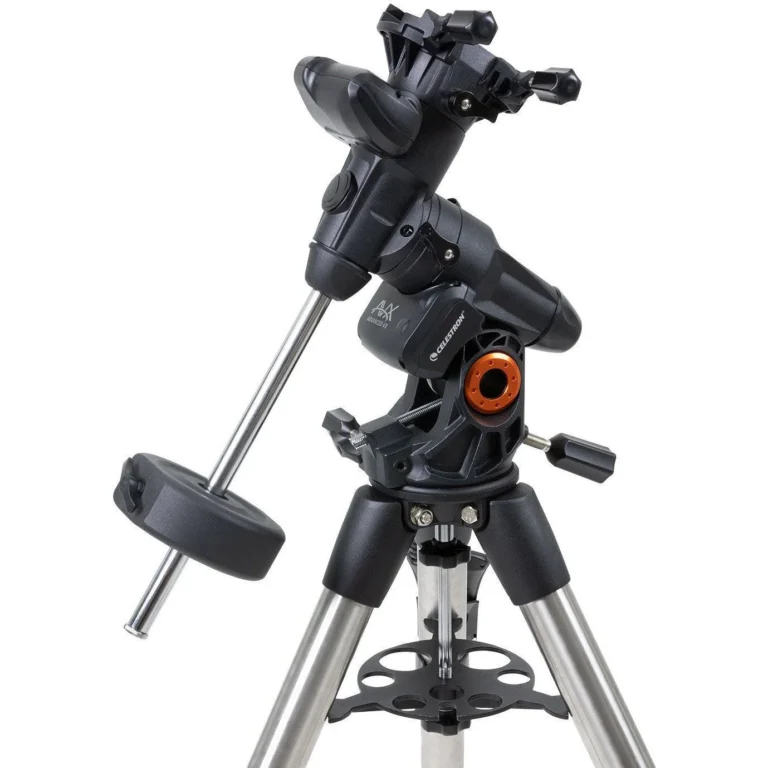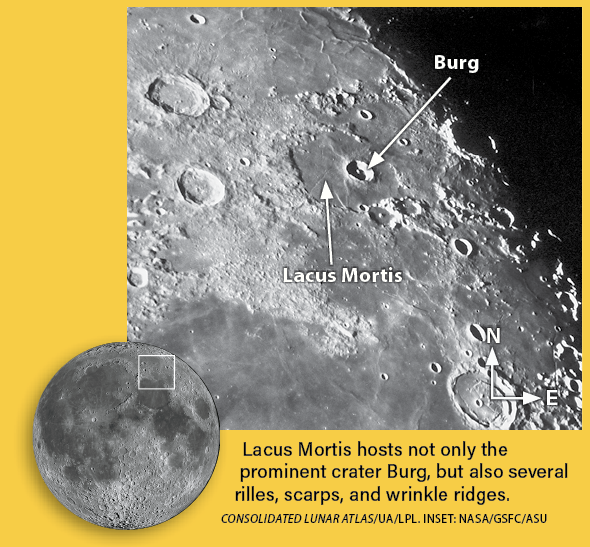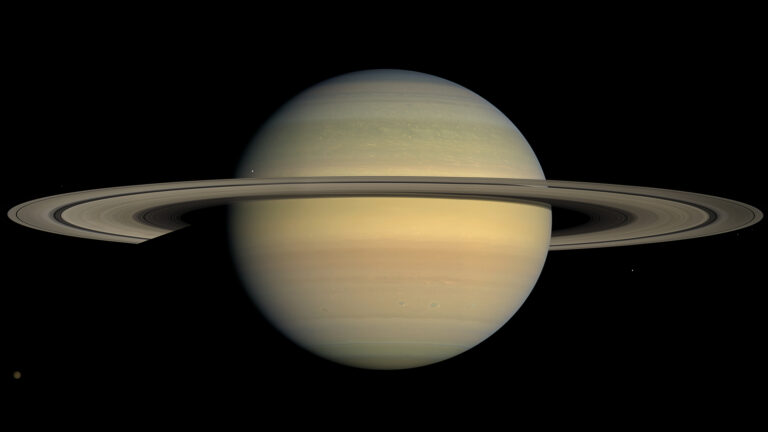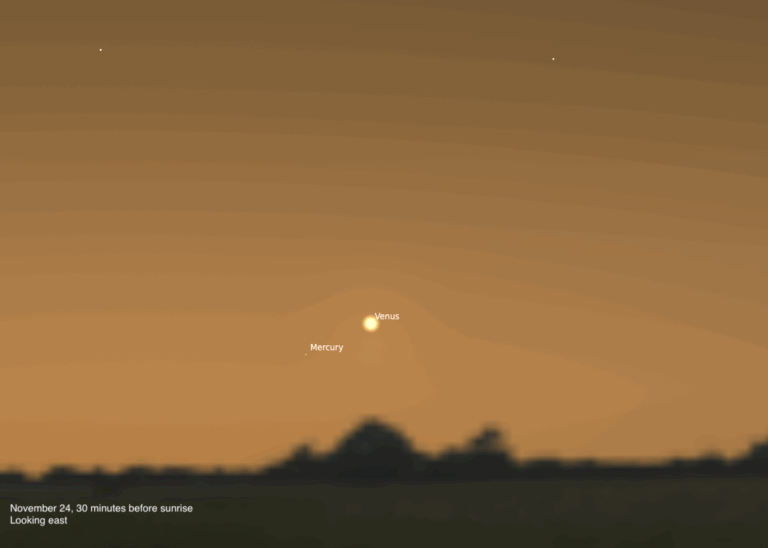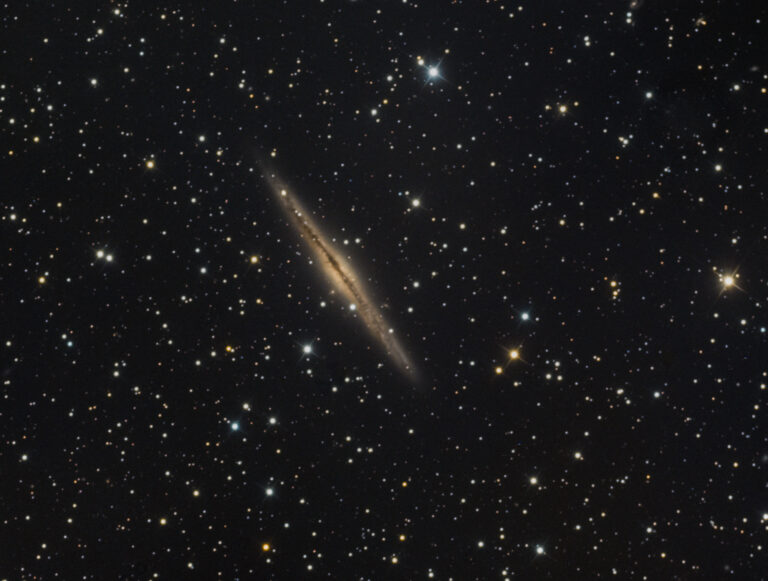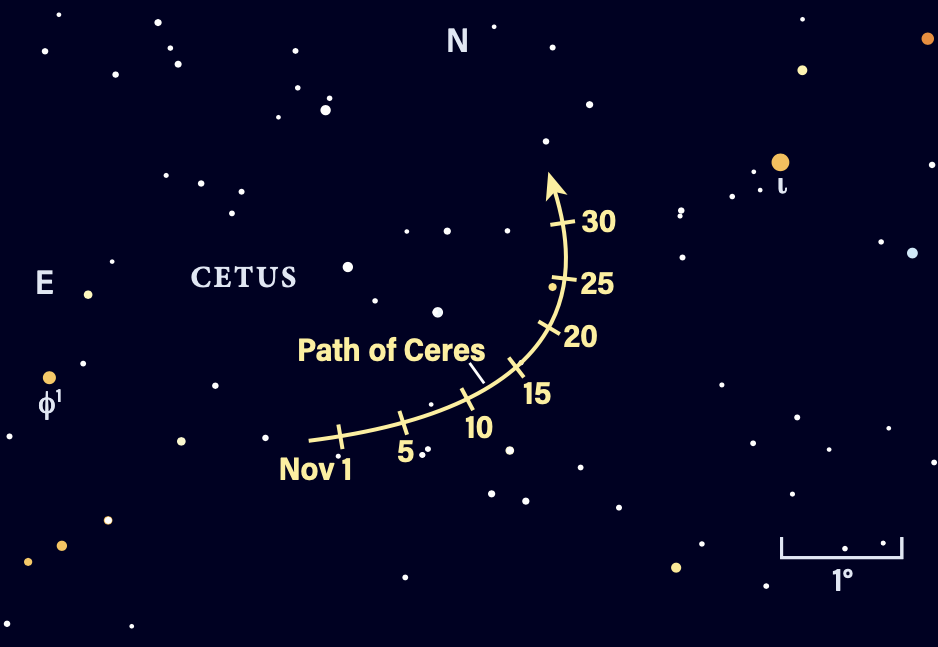
Key Takeaways:
- On November 26, Jupiter will execute a passage south of Pollux.
- Dwarf planet 1 Ceres will achieve a stationary point at 6 P.M. EST in Cetus, subsequently shifting from retrograde to prograde motion, presenting as an 8th-magnitude object observable with optical aid near Iota (ι) Ceti.
- The long-period variable star Mira (Omicron [ο] Ceti), also situated within Cetus, is currently observed at approximately mid-8th magnitude, requiring optical magnification for detection east of Ceres and southwest of Delta (δ) Ceti.
- General celestial parameters include a 49% waxing crescent Moon, with both Ceres and Mira presenting as mid-8th magnitude objects that necessitate optical assistance for visibility.
Looking for a sky event this week? Check out our full Sky This Week column.
November 26: Jupiter passes south of Pollux
Dwarf planet 1 Ceres stands stationary at 6 P.M. EST in the constellation Cetus the Whale. Previously moving westward, or retrograde, after today the dwarf planet will now turn and begin moving prograde (eastward) against the background stars.
Eighth-magnitude Ceres is visible as soon as it’s dark, floating above the southeastern horizon. Tonight it lies near 3rd-magnitude Iota (ι) Ceti, just 2° southeast of this star. You can scan the sky with either binoculars or a telescope, either should pick up Ceres’ glow. Use the chart above to aid you.
Also within Cetus the Whale is the “wonderful” variable star Mira (Omicron [ο] Ceti). A known long-period variable star, Mira’s brightness changes over the course of nearly a year, swinging from 2nd to 10th magnitude, in and out of visible range. According to the American Association of Variable Star Observers, Mira is currently around mid-8th magnitude, roughly the same brightness as Ceres. It will also require binoculars or a telescope to view — see if you can find it tonight, far east of Ceres’ position and about 6° southwest of 4th-magnitude Delta (δ) Ceti.
Sunrise: 6:59 A.M.
Sunset: 4:36 P.M.
Moonrise: 12:25 P.M.
Moonset: 11:25 P.M.
Moon Phase: Waxing crescent (49%)
*Times for sunrise, sunset, moonrise, and moonset are given in local time from 40° N 90° W. The Moon’s illumination is given at 10 P.M. local time from the same location.

